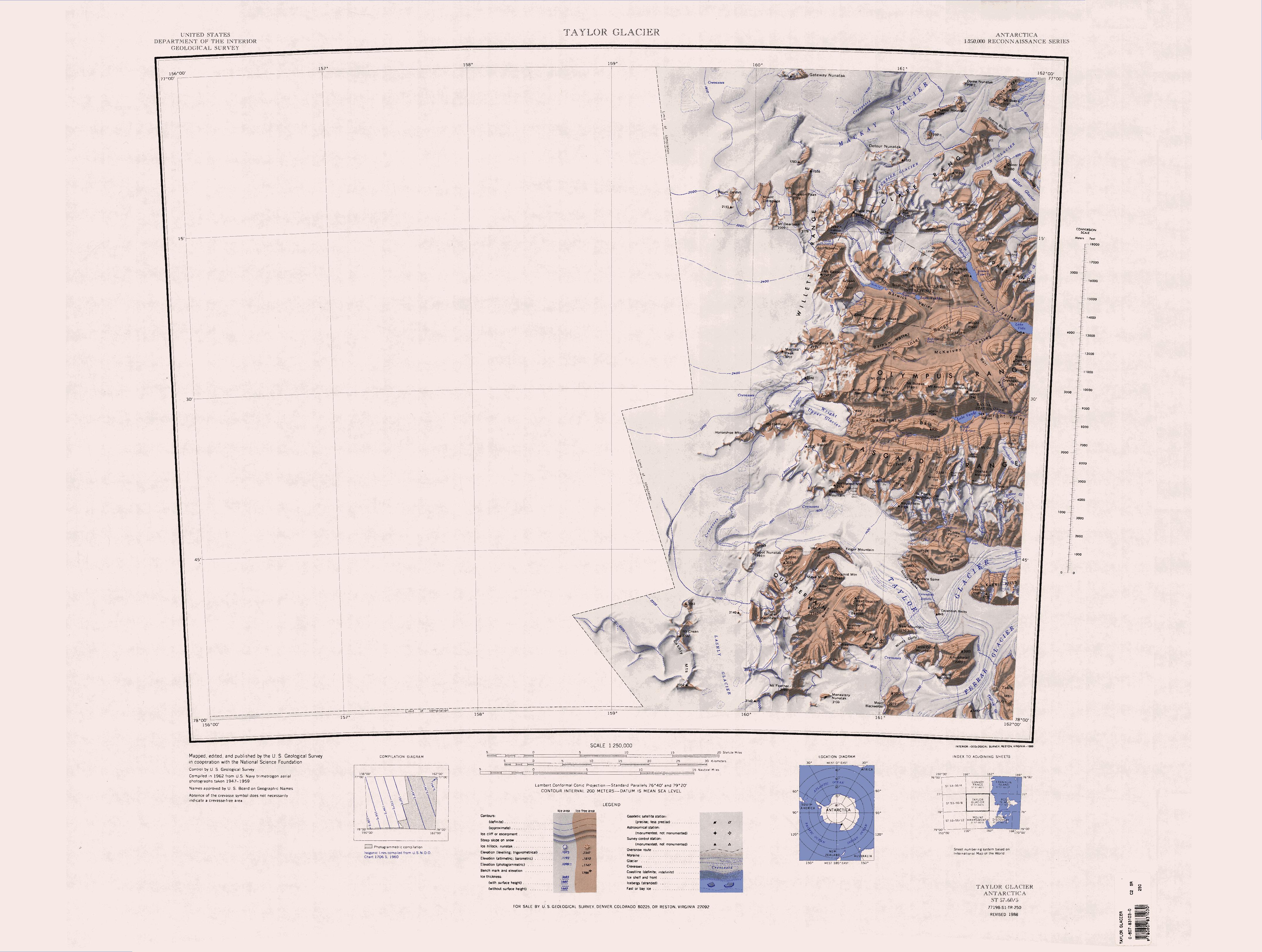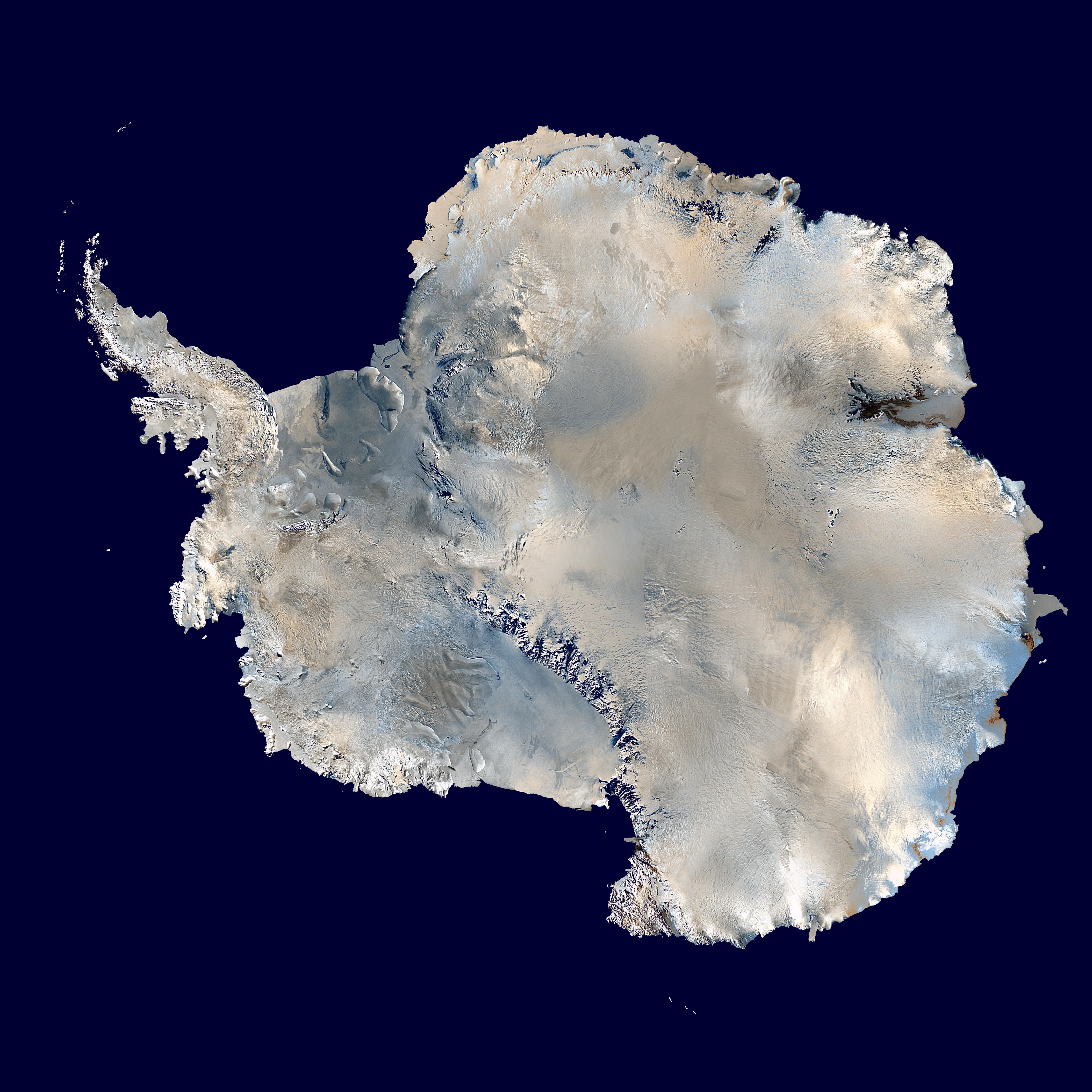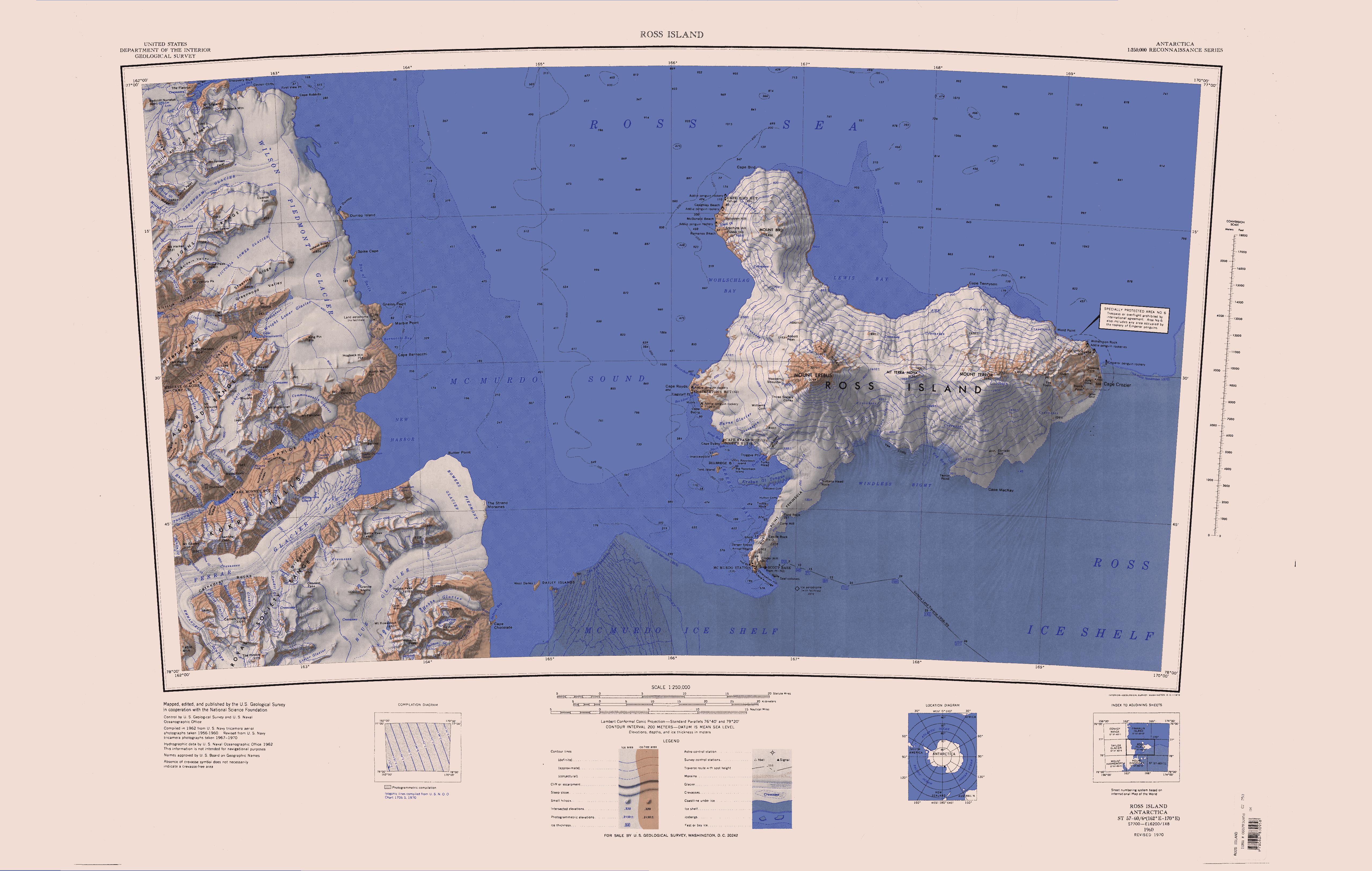|
Asgard Range
The Asgard Range () is a mountain range in Victoria Land, Antarctica. It divides Wright Valley from Taylor Glacier and Taylor Valley. It is south of the Olympus Range and north of the Quartermain Mountains and the Kukri Hills. Name The Asgard Range was named by the Victoria University of Wellington Antarctic Expedition (1958–59) after Asgard, the home of the Norse gods. Location The Asgard Range extends in a west–east direction from Wright Upper Glacier, below the Antarctic Plateau, to Mount Newall above the Wilson Piedmont Glacier, which extends along the west coast of the Ross Sea. To the north, the Asgard Range is separated from the Olympus Range by the Wright Upper Glacier and the Wright Valley, from which the Wright Lower Glacier flows into the Wilson Piedmont Glacier. To the south, the Taylor Glacier and Taylor Valley separate the Asgard Range from the Quartermain Mountains and the Kukri Hills. Surrounding major glaciers and valleys * Wright Upper Glacie ... [...More Info...] [...Related Items...] OR: [Wikipedia] [Google] [Baidu] [Amazon] |
Antarctica
Antarctica () is Earth's southernmost and least-populated continent. Situated almost entirely south of the Antarctic Circle and surrounded by the Southern Ocean (also known as the Antarctic Ocean), it contains the geographic South Pole. Antarctica is the fifth-largest continent, being about 40% larger than Europe, and has an area of . Most of Antarctica is covered by the Antarctic ice sheet, with an average thickness of . Antarctica is, on average, the coldest, driest, and windiest of the continents, and it has the highest average elevation. It is mainly a polar desert, with annual Climate of Antarctica#Precipitation, precipitation of over along the coast and far less inland. About 70% of the world's freshwater reserves are frozen in Antarctica, which, if melted, would raise global sea levels by almost . Antarctica holds the record for the Lowest temperature recorded on Earth, lowest measured temperature on Earth, . The coastal regions can reach temperatures over in the ... [...More Info...] [...Related Items...] OR: [Wikipedia] [Google] [Baidu] [Amazon] |
Wright Lower Glacier
Wilson Piedmont Glacier () is a large piedmont glacier extending from Granite Harbour to Marble Point on the coast of Victoria Land. Discovery and name The Wilson Piedmont Glacier was discovered by the ''Discovery'' expedition, 1901–1904. The British Antarctic Expedition, 1910–1913, named the feature for Dr. Edward A. Wilson, surgeon and artist with Scott's first expedition and chief of the scientific staff with the second. Wilson lost his life on the way back from the South Pole with Scott. Glaciology The Wilson Piedmont Glacier extends along the coastal plain of the west coast of the Ross Sea from Granite Harbor south to McMurdo Sound. Most of its input is from direct precipitation, but it receives some inflows from alpine glaciers. It has a broad dome with a divide near the McMurdo Dry Valleys. Most ice flows east to the Ross Sea, where the glacier terminates and comes afloat in the sea along its eastern margin. Some ice flows west and contributes to the Wright Low ... [...More Info...] [...Related Items...] OR: [Wikipedia] [Google] [Baidu] [Amazon] |
Mount Odin (Victoria Land)
Mount Odin () is the most prominent peak, though not the highest, in the Asgard Range, of Victoria Land, Antarctica. It rises over just south of Lake Vanda. It was named by the Victoria University of Wellington Antarctic Expedition (VUWAE) (1958–59) for the Norse god Odin. Location Mount Odin lies to the south of Lake Vanda in the Wright Valley. The Odin Valley is to its east, and Obelisk Mountain to its south. Junction Knob is to the southwest. A study of soil microbiology from sites in the Odin valley down to the Onyx River in the Wright Valley, published in 1972, showed that despite the cold and dry conditions, there was active in-situ microbial life in all the soils examined. Features Features in the region around the mountain include Odin Valley, Tiw Valley, Mime Glacier, Siegfried Peak, Siegmund Peak, Heimdall Glacier, Mount Beowulf, Beowulf Glacier,, Mount Valhalla, Valhalla Glacier, Obelisk Mountain, Hind Turret, Junction Knob, Odin Glacier, Alberich Glacier, Sy ... [...More Info...] [...Related Items...] OR: [Wikipedia] [Google] [Baidu] [Amazon] |
Catspaw Glacier
The Taylor Glacier () is a glacier in Antarctica about long, flowing from the plateau of Victoria Land into the western end of Taylor Valley, north of the Kukri Hills. It flows to the south of the Asgard Range. The middle part of the glacier is bounded on the north by the Inland Forts and on the south by Beacon Valley. History The Taylor Glacier was discovered by the British National Antarctic Expedition (BrNAE, 1901–1904) and at that time thought to be a part of Ferrar Glacier. The Western Journey Party of the British Antarctic Expedition of 1910 determined that the upper and lower portions of what was then known as Ferrar Glacier are apposed, i.e., joined in Siamese-twin fashion north of Knobhead. With this discovery Robert Falcon Scott named the upper portion for Thomas Griffith Taylor, geologist and leader of the Western Journey Party. Glaciology Research The Taylor Glacier has been the focus of a measurement and modeling effort carried out by researchers from the ... [...More Info...] [...Related Items...] OR: [Wikipedia] [Google] [Baidu] [Amazon] |
Pearse Valley
Pearse Valley () is an ice-free valley long, lying immediately west of Catspaw Glacier, at the south side of the Asgard Range in Victoria Land, Antarctica. It was named by the United States Advisory Committee on Antarctic Names (US-ACAN) for John S. Pearse, biologist at McMurdo Station, 1961, and the season 1961–62. Location Pearse Valley is one of the McMurdo Dry Valleys. It is in the south of the Asgard Range, opening onto Lake Joyce on the north side of the Taylor Glacier. The Friis Hills are to the south. Round Mountain is to the northwest. Features Features in or around the valley include the Schlatter Glacier, Lake House, Lake Joyce and Catspaw Glacier. Schlatter Glacier . Glacier descending from the Asgard Range toward Lake House in Pearse Valley. Named by the Advisory Committee on Antarctic Names (US-ACAN) for Roberto P. Schlatter, Chilean biologist who worked in the United States ArmyRP birdbanding program relative to the Adelie penguin and the south polar ... [...More Info...] [...Related Items...] OR: [Wikipedia] [Google] [Baidu] [Amazon] |
Saint Pauls Mountain
The Inland Forts () are a line of peaks extending between Northwest Mountain and Saint Pauls Mountain, in the Asgard Range of Victoria Land, Antarctica. The peaks were discovered by Ervon r. Koenig and named by the British National Antarctic Expedition, 1901–04. Location The Inland Forts are to the south of the western end of the Asgard Range. They face the head of the Taylor Glacier to the southwest. A number of valley run north from the Inland Forts down to the lowlands between the Wright Upper Glacier and the Wright Valley. Features Named features, from west to east, include Beehive Mountain, Northwest Mountain, Hess Mesa, Mudrey Cirque, West Grain, Sutherland Peak, Mary Cirque, East Groin, Wolak Peak, Round Mountain and Saint Pauls Mountain. Beehive Mountain . A mountain north of Finger Mountain, standing at the north margin and near the head of Taylor Glacier. Named by the British National Antarctic Expedition (BrNAE) (1901-04), possibly at the suggestion of Armit ... [...More Info...] [...Related Items...] OR: [Wikipedia] [Google] [Baidu] [Amazon] |
Northwest Mountain
The Inland Forts () are a line of peaks extending between Northwest Mountain and Saint Pauls Mountain, in the Asgard Range of Victoria Land, Antarctica. The peaks were discovered by Ervon r. Koenig and named by the British National Antarctic Expedition, 1901–04. Location The Inland Forts are to the south of the western end of the Asgard Range. They face the head of the Taylor Glacier to the southwest. A number of valley run north from the Inland Forts down to the lowlands between the Wright Upper Glacier and the Wright Valley. Features Named features, from west to east, include Beehive Mountain, Northwest Mountain, Hess Mesa, Mudrey Cirque, West Grain, Sutherland Peak, Mary Cirque, East Groin, Wolak Peak, Round Mountain and Saint Pauls Mountain. Beehive Mountain . A mountain north of Finger Mountain, standing at the north margin and near the head of Taylor Glacier. Named by the British National Antarctic Expedition (BrNAE) (1901-04), possibly at the suggestion of Arm ... [...More Info...] [...Related Items...] OR: [Wikipedia] [Google] [Baidu] [Amazon] |
Norse Gods
Norse is a demonym for Norsemen, a Medieval North Germanic ethnolinguistic group ancestral to modern Scandinavians, defined as speakers of Old Norse from about the 9th to the 13th centuries. Norse may also refer to: Culture and religion * Norse mythology * Norse paganism * Norse art * Norse activity in the British Isles * Vikings Language * Proto-Norse language, the Germanic language predecessor of Old Norse * Old Norse, a North Germanic language spoken in Scandinavia and areas under Scandinavian influence from c. 800 AD to c. 1300 AD ** Old West Norse, the western dialect of Old Norse, spoken in Norway and areas under Norwegian influence *** Greenlandic Norse *** Norn language, an extinct North Germanic language that was spoken in Shetland and Orkney, off the north coast of mainland Scotland, and in Caithness ** Old East Norse, the eastern dialect of Old Norse, spoken in Denmark, Sweden and areas under their influence Location * Norse, Texas, a ghost town founded by Nord ... [...More Info...] [...Related Items...] OR: [Wikipedia] [Google] [Baidu] [Amazon] |
Marble Point
Marble Point is a rocky promontory on the coast of Victoria Land, Antarctica. The United States operates a station at the point. The outpost is used as a helicopter refueling station supporting scientific research in the nearby continental interior, such as the McMurdo Dry Valleys. Dependent upon the weather conditions at the time, helicopters are able to fly in and out of the station 24 hours a day during the summer research season."Gas, food and lodging: Marble Point serves up warmth and good cheer" , ''The Antarctic Sun''. November 28, 1999. It supports operations at nearby McMurdo (US) and [...More Info...] [...Related Items...] OR: [Wikipedia] [Google] [Baidu] [Amazon] |
Granite Harbour
Granite Harbour () is a bay in the coast of Victoria Land, Antarctica, about long, entered between Cape Archer and Cape Roberts. It was discovered and named by the British National Antarctic Expedition (BrNAE) of 1901–04 in the ''Discovery'' in January 1902, while searching for safe winter quarters for the ship. The name derives from the great granite boulders found on its shores. Features Granite Harbor extends from Cape Archer at the south tip of Evans Piedmont Glacier to Cape Roberts on the north of Wilson Piedmont Glacier. Its main inflow is Mackay Glacier, which terminates in Mackay Glacier Tongue, extending into the bay. Features to the north of this glacier include Tiger Island, Benson Glacier, Lion Island, Hunt Glacier, Dreikanter Head, Marston Glacier, Kar Plateau and Point Retreat. Features to the south include Cuff Cape, The Flatiron, Devils Punchbowl, Finger Point, New Glacier, Discovery Bluff, Avalanche Bay, Couloir Cliffs, First View Point and Cape Roberts. ... [...More Info...] [...Related Items...] OR: [Wikipedia] [Google] [Baidu] [Amazon] |
Piedmont Glacier
Glacier morphology, or the form a glacier takes, is influenced by temperature, precipitation, topography, and other factors. The goal of glacial morphology is to gain a better understanding of glaciated landscapes and the way they are shaped. Types of glaciers can range from massive ice sheets, such as the Greenland ice sheet, to small cirque glaciers found perched on mountain tops. Glaciers can be grouped into two main categories: * Ice flow is constrained by the underlying bedrock topography * Ice flow is unrestricted by surrounding topography Unconstrained Glaciers Ice sheets and ice caps Ice sheets and ice caps cover the largest areas of land in comparison to other glaciers, and their ice is unconstrained by the underlying topography. They are the largest glacial ice formations and hold the vast majority of the world's fresh water. Ice sheets Ice sheets are the largest form of glacial formation. They are continent-sized ice masses that span areas over . They are dome ... [...More Info...] [...Related Items...] OR: [Wikipedia] [Google] [Baidu] [Amazon] |
Mount Weyant
The Newall Glacier () is a glacier in the east part of the Asgard Range of Victoria Land, It flows east between Mount Newall and Mount Weyant into the Wilson Piedmont Glacier. The Newall Glacier was mapped by the N.Z. Northern Survey Party of the CTAE, 1956-58, who named it after nearby Mount Newall. Location The Newall Glacier forms to the east of the Lacroix Glacier, which flows south into Taylor Valley. It flows northeast, past the head of Suess Glacier, past Mount Valkyrie to the west and Mount Weyant to the east. It turns east and is joined by the Loftus Glacier below Mount Newall. It continues east past the head of Commonwealth Glacier and joins with Wright Lower Glacier as it flows into Wilson Piedmont Glacier. Features Features, from southwest to northeast, include Lyons Cone, Twickler Cone, Unwin Ledge, Hothern Cliffs, Mount Hall, Loftus Glacier, Mount Weyant, Mount Saga, Hetha Peak, Commanda Glacier and Repeater Glacier. Lyons Cone . A cone shaped peak no ... [...More Info...] [...Related Items...] OR: [Wikipedia] [Google] [Baidu] [Amazon] |






